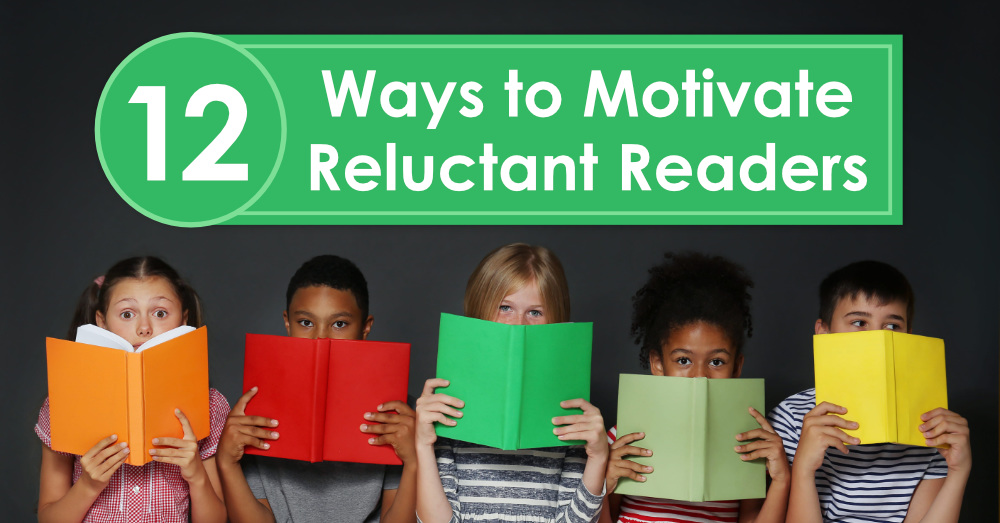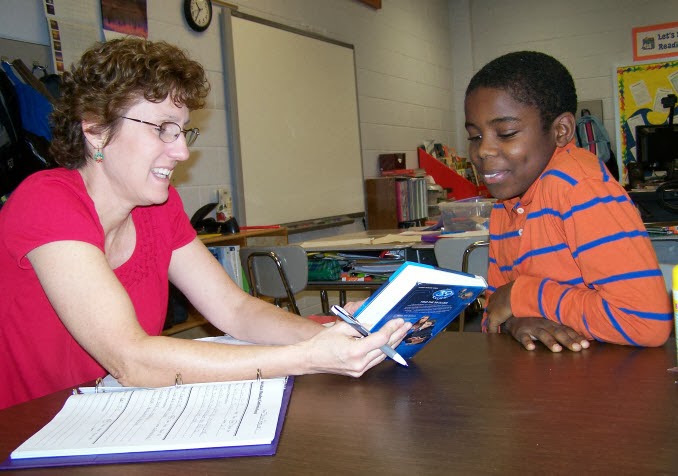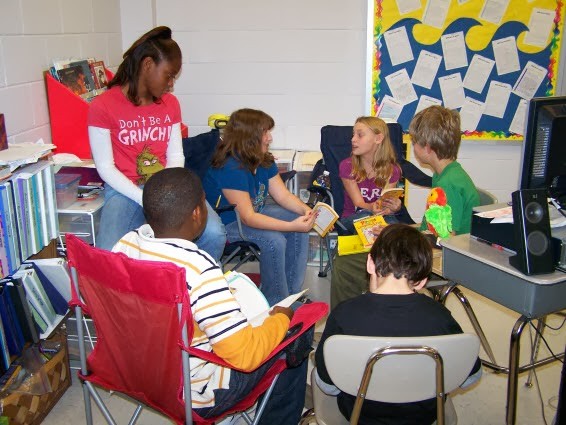I think I must have been born with a book in my hand! My parents told me that from the moment I learned to read, I would read everything in sight, from cereal boxes to billboards. When I began reading books, there was no stopping me! I even begged them to name my baby brother after a book character. (Yes, Tim, that story is really true!)
So when I became a teacher, I was amazed to discover that most kids don’t enjoy reading. To me, books are full of excitement and adventure, like a movie that you can take with you. I spent my first 25 years as a teacher in a quest for the perfect way to teach reading, and I finally discovered the Reading Workshop approach. It made a tremendous difference in my classroom, and even the most reluctant students actually began to love reading!
Here are a dozen strategies that are often included in Reading Workshop, and none of them involve stickers, certificates, or pizza. External rewards may work in the short term, but the best way to foster a love of reading is to help your students discover that a great book is a reward in itself!
You can motivate reluctant readers when you ….
- Read aloud to them.
Choose books that you love, and read aloud with passion and expression. Get silly and change your voice to mimic the characters. (If you’re not comfortable doing this, offer to babysit for a friend and practice reading to a child. It’s fun!) When you’re reading aloud, stop at the good parts and say, “Looks like we’re out of time today….” Leave ‘em wanting more! - Let them choose their own books.
The biggest turnoff to reading is being required to read boring books. Provide a wide variety of books from different authors and across different genres, and let students choose the books they want to read. You can use reading interest surveys to help them find books on topics that interest them. - Provide time for reading.
This one’s a no-brainer, but sometimes it’s difficult to do if you have to teach from a basal reader. Kids need class time to read, and lots of it. The room needs to be quiet, and everyone needs to be reading, not playing games or doing centers. Just reading. If you’re not sure how to implement this effectively, you can find helpful information and a free webinar on Teaching Resources that explains the Reading Workshop approach. - Let them create a cozy reading nook.
Who wants to sit at a desk for six hours a day? Collect an assortment of folding chairs, pillows, beanbags and other items that your kids can move to another spot in the room to read. Let reading be a time when they can get away from their desks and get comfortable. - Confer with them.
An important part of the Reading Workshop approach is conferring with students individually about what they are reading. You’ll learn about your students as readers and as individuals, and you’ll be able to connect with them personally. You’ll also find out if the books they’re choosing are on the right level. If not, you can help them find better choices, books that are just right. - Read what they’re reading.
I used to get a secret thrill when the Scholastic Book Clubs flyer arrived! I know it’s silly, but I love seeing the new books that are available and trying to decide how to spend my bonus points. I discovered that it’s fun to let students help me pick out books for the class, and I often ordered an extra copy for myself. If you’re not in the habit of doing this, you’ll be amazed at how quickly you can become engrossed in a book like The City of Ember. You might even discover that the inner quirky kid in you loves The Diary of a Wimpy Kid or Captain Underpants! - Introduce them to audio books.
Think audio books are for little kids? Maybe you haven’t listened to Madeleine L’Engle read A Wrinkle in Time! Audio books are some of the best reading motivators you’ll ever find, and they help students become better readers as well. One reason is that when students follow along in the book as they listen, they see the words in print as they hear them. Powerful stuff. Not to mention the benefits of hearing amazing stories read by fluent and proficient authors! - Make it social. Do you have a social bunch of students this year? If so, get your kids talking about books by forming classroom book clubs. Book clubs are groups of students who read the same books and get together to talk about them, sort of like Literature Circles without roles. Check out this YouTube video posted by Texas teacher Chase Young that shows Literature Circle in action. You can also use kid-safe social networking sites like Edmodo.com and Kidblog.org to get online discussions going about books. If you want to know more about Literature Circles, check out the Literature Circles resources on my website.
- Let them read other stuff.
If books don’t interest your students, let them read magazines, graphic novels, informative websites, or instruction manuals for their favorite game systems. Be sure to check for appropriateness, but you can often turn kids on to reading by letting them read nontraditional forms of literature. - Get them hooked on a series.
I must have read every single Nancy Drew book in the library when I was a kid! And I fell hook, line, and sinker for Harry Potter long before the series was turned into a movie. When kids get to know the characters in a series, they feel connected and want to know more about them. So find a great series, read the first book aloud, and make sure you have plenty of copies of the sequels on hand! - Let kids give book talks.
Why not start each day with a short student-led book talk? Ask students to sign up in advance to do a 2-minute informal book share. Letting them tell about their favorite book will motivate other kids to want to read that book or others by the author. - Use technology.
Books in print might not be a thing of the past, but ebooks seem to be edging them out. However, you don’t have to have a Kindle or an iPad in your classroom to introduce your students to ebooks. Younger kids will enjoy StorylineOnline.net, and older students will enjoy reading ebooks on free Kindle software that you can download from Amazon.com and display on your computer.
What are some of your favorite ways to get kids reading? Do you have a favorite read aloud or a series that you love? Please share!










